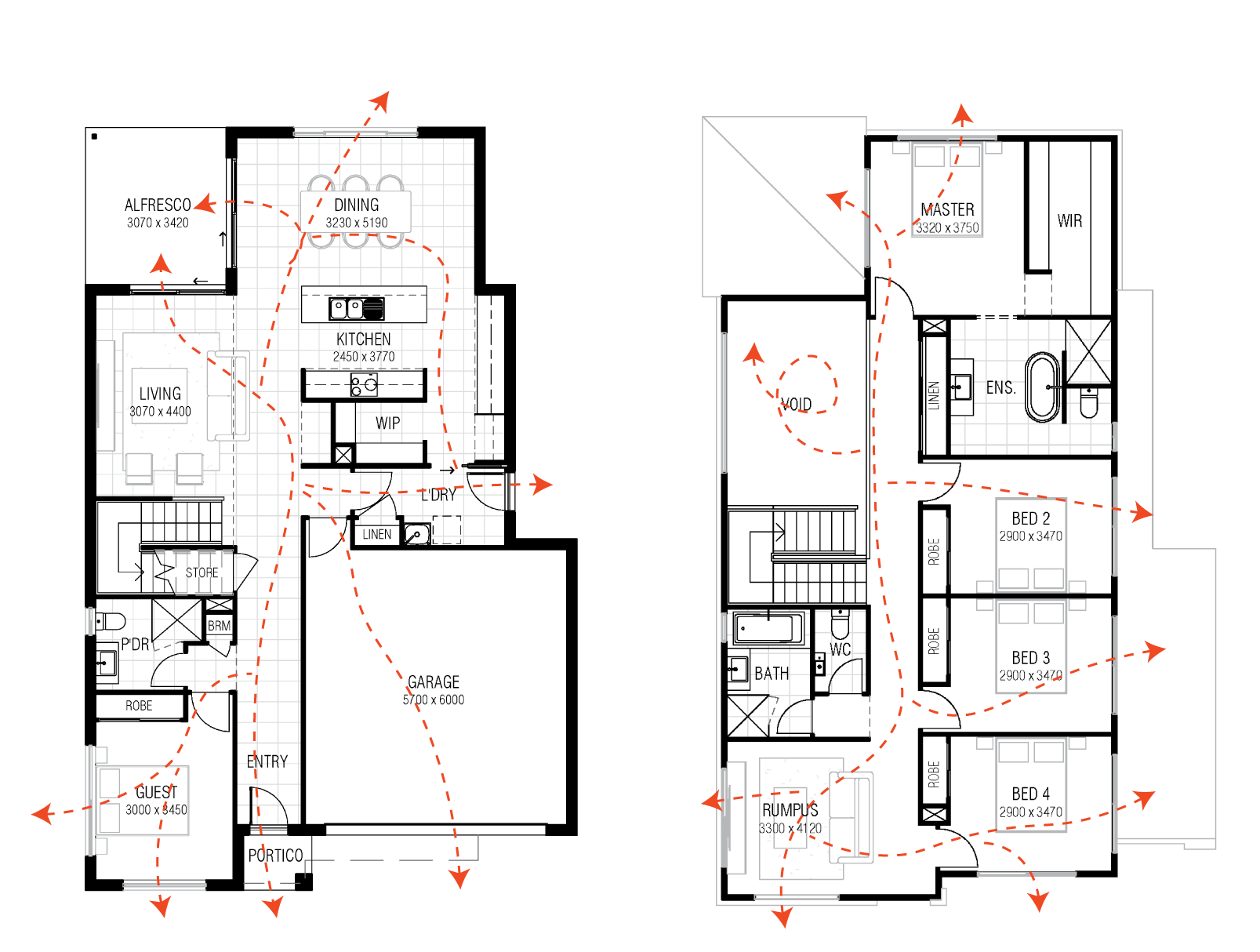What is Cross Ventilation & How to Achieve it in your Home
- Building Tips
With global warming a common talking point in today's world, people are looking towards more sustainable practices in their lives to reduce energy consumption.
With the adoption of solar and other environmentally conscious practices growing, builders are turning to more sustainable building materials and practices. Another environmentally friendly practice that you can adopt when building new is to ensure that your home has been designed to take full advantage of cross ventilation. Cross ventilation is the process of naturally cooling space without relying on artificial cooling methods such as air conditioning. At DC Living, we carefully consider cross ventilation when designing all of our homes - after all, our homes have been designed with Queensland's enviable climate and way of living in mind. Being Queensland born and bred, we understand the importance of cross ventilation and the ongoing benefits of this technique. These include a reduction in energy consumption and subsequent costs, resulting in a more sustainable approach to get us through the warmer summer months.
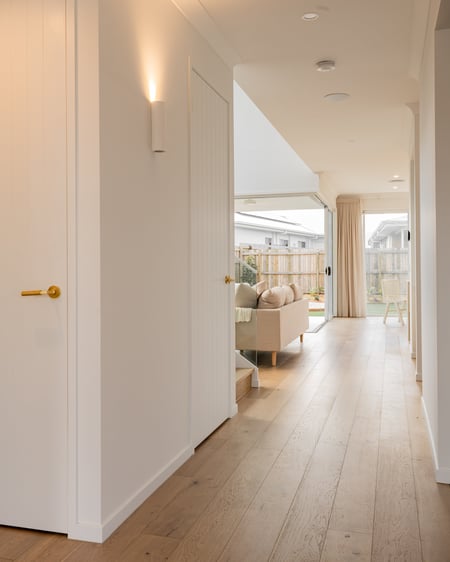
What is cross ventilation?
Cross ventilation is a natural method of cooling a home. Essentially, it is the process of allowing wind to force cool exterior air from an inlet (such as a window or door) whilst pushing existing warm air out through an exit point, typically a different window or door. Cross ventilation is most effective when the entry and exit points are placed on opposite sides of a room or space (but no more than 12 metres apart), and there is an unrestricted pathway between these points (i.e. the pathway is not restricted by a wall or alike). This allows the cool air, pulled in from the outside of the home, to travel the farthest route from entry to exit, cooling the home in the process through a natural and sustainable method.
We have explained the process of cross ventilation in the visualisation below to showcase how the process works in the design of our Hayman 280, also on display in Brookhaven Estate. Liveability has pulled together a great video that explains cross ventilation in layman's terms.
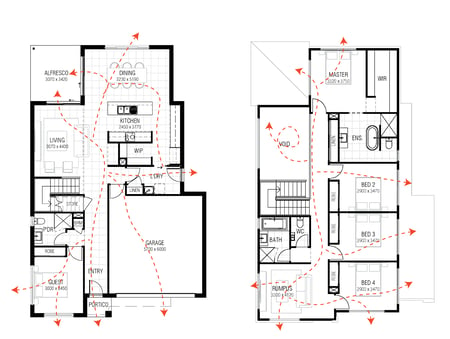
What are the benefits of cross ventilation?
There are many benefits to achieving natural cross ventilation in your home. By being able to cool a room without artificial cooling methods such as air conditioning, you can experience a reduction in energy consumption and the associated costs that come with this. You will also see a reduction in stale air in the home meaning a cleaner and healthier air system for you to consume, as well as less dirty ducts needing to be cleaned - a routine practice one needs to complete when relying on mechanical ventilation systems.
How can you achieve cross ventilation in your home?
Windows & Opening Placement
Situate windows and doors around the home where they can take advantage of prevailing breezes. It is important to position these openings on at least two sides of a room at a minimum, either on opposing or adjacent walls, to allow for cross ventilation. Prevailing breezes may change depending on the time of day and time of year, and cross ventilation is less effective if windows or openings are more than 12m apart so keep both of these points in mind when designing window and door placement in a home.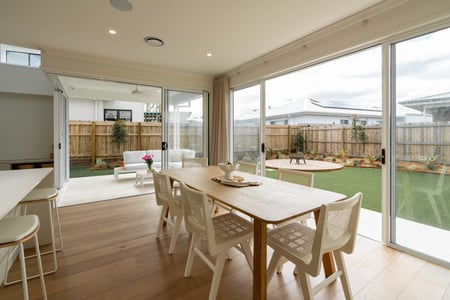
Windows & Opening Types
Airflow patterns and movements can differ based on the size and type of a window or opening. They can impact how air is directed or deflected and this contributes to natural cross ventilation in a home.
- Casement and awning windows: These are traditional window types and differ based on the placement of the hinge that allows the window to open and close, either on the vertical side of the window (casement) or along the top horizontal edge of the window (awning). Awning windows are typically the least effective in achieving cross ventilation.
- Louvre windows: This type of window is made up of a number of panels that can be opened at various angles to allow for controlled airflow. Louvre windows are the most effective window type for achieving cross ventilation in your home.
- Sliding doors: Sliding doors are a good option when considering cross ventilation in your home as they provide the ability to control the amount of air that is allowed in or out. It is best, however, to place these doors out of direct sunlight or use curtains as a blocker as glass surfaces tend to absorb heat during warm days which will increase the difficulty to cool your home through natural cross ventilation.
Curtain selection can also impact the ability to achieve effective cross ventilation. Roller blinds, for example, while great at blocking out light also act as a blocker for breeze to flow in and out naturally. Shutter blinds are a great option as they act similarly to louvre windows mentioned above and sheer curtains can also allow breeze to flow but the choice of material is important here.
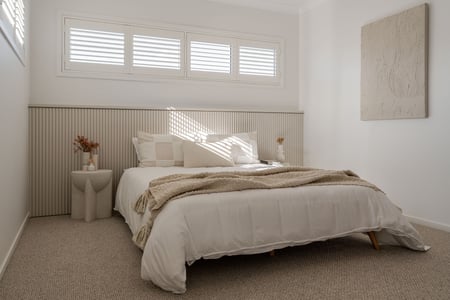
Mechanical Assistance Methods
While one of the benefits of natural cross ventilation is a reduction of energy consumption, you may need assistance to create additional air flow movement during warmer months. A ceiling or pedal fan is a great option to assist in producing more efficient and effective cross ventilation while remaining a more energy-conscious alternative than air conditioning, for example. Believe it or not, you are best to position a pedestal fan outwards to the source of natural air (i.e. in the direction of an open window) as opposed to facing inwards to the room you are attempting to cool.
Want to learn more about building with DC Living? Enquire to speak with a New Home Consultant today.

